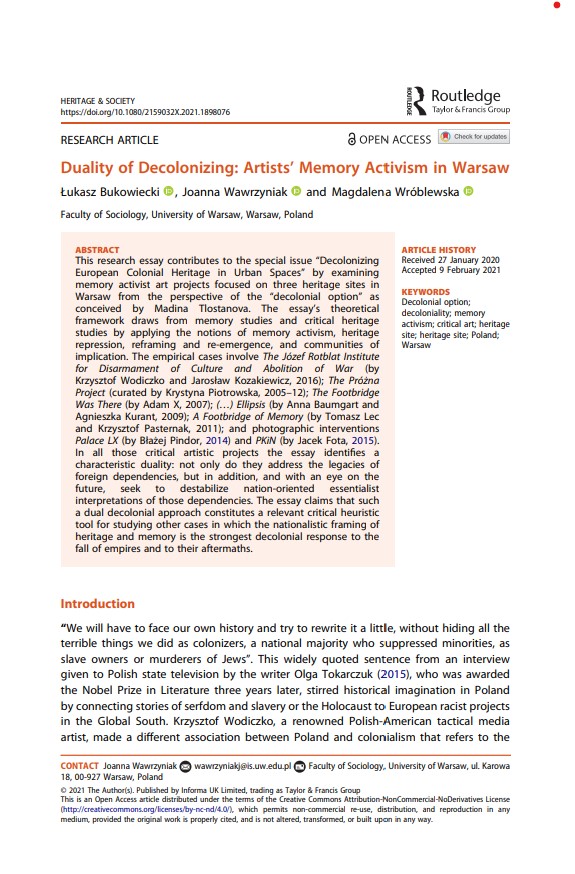This research essay contributes to the special issue “Decolonizing European Colonial Heritage in Urban Spaces” by examining memory activist art projects focused on three heritage sites in Warsaw from the perspective of the “decolonial option” as conceived by Madina Tlostanova. The essay’s theoretical framework draws from memory studies and critical heritage studies by applying the notions of memory activism, heritage repression, reframing and re-emergence, and communities of implication. The empirical cases involve The Józef Rotblat Institute for Disarmament of Culture and Abolition of War (by Krzysztof Wodiczko and Jarosław Kozakiewicz, 2016); The Próżna Project (curated by Krystyna Piotrowska, 2005–12); The Footbridge Was There (by Adam X, 2007); (…) Ellipsis (by Anna Baumgart and Agnieszka Kurant, 2009); A Footbridge of Memory (by Tomasz Lec and Krzysztof Pasternak, 2011); and photographic interventions Palace LX (by Błażej Pindor, 2014) and PKiN (by Jacek Fota, 2015). In all those critical artistic projects the essay identifies a characteristic duality: not only do they address the legacies of foreign dependencies, but in addition, and with an eye on the future, seek to destabilize nation-oriented essentialist interpretations of those dependencies. The essay claims that such a dual decolonial approach constitutes a relevant critical heuristic tool for studying other cases in which the nationalistic framing of heritage and memory is the strongest decolonial response to the fall of empires and to their aftermaths.

